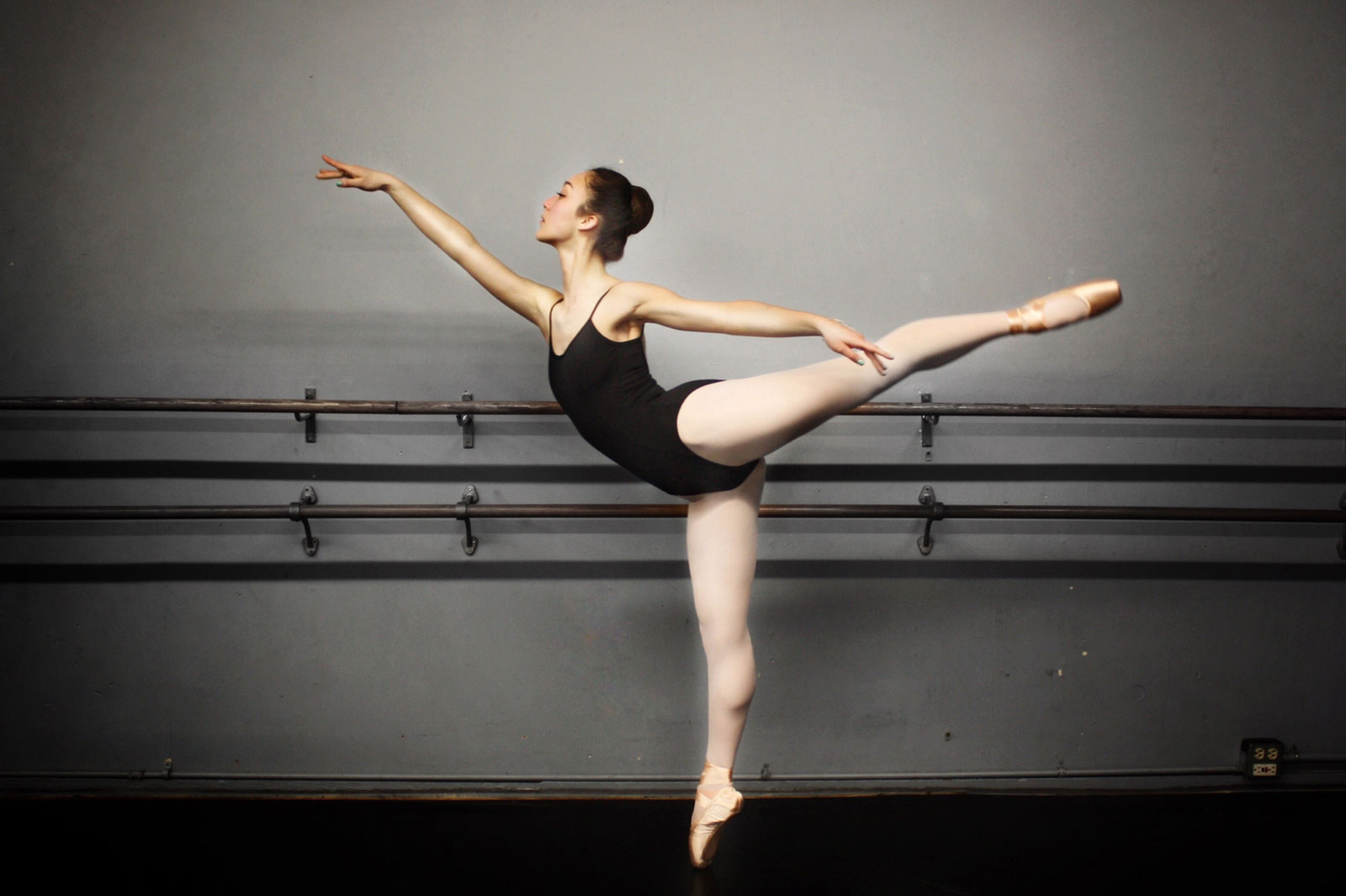Home>Events & Info>Ballet>What Does Sous Sus Mean In Ballet


Ballet
What Does Sous Sus Mean In Ballet
Modified: January 22, 2024
Discover the meaning of "sous sus" in the world of ballet. Explore its significance and how it adds grace and fluidity to classical dance movements.
(Many of the links in this article redirect to a specific reviewed product. Your purchase of these products through affiliate links helps to generate commission for AudioLover.com, at no extra cost. Learn more)
Table of Contents
Introduction
Ballet is a timeless art form that has captivated audiences for centuries. It combines exquisite technique, graceful movements, and storytelling to create a mesmerizing spectacle on stage. One of the fundamental elements of ballet is the use of various positions and steps, each with its own significance and beauty. Among these is the sous sus, a term that holds a special place in the ballet lexicon.
Sous sus, which translates to “under over” in French, is a crucial movement in ballet that requires tremendous strength, control, and balance from the dancer. It is a term that encompasses both a specific position and a transitional movement, adding depth and dimension to the choreography. Whether executed as a momentary pause or seamlessly integrated into a longer sequence, the sous sus delivers a sense of weightlessness and elegance to the performance.
This article will delve into the intricacies of the sous sus in ballet, exploring its definition, history, technique, variations, and significance within the ballet world. We will also highlight famous ballets and choreographies that prominently feature the sous sus, showcasing its versatility and impact on the overall aesthetic of a performance.
Definition of Sous Sus in Ballet
In ballet, the sous sus refers to a movement where a dancer rises onto the balls of their feet, bringing their heels close together and positioning their legs in a tight fifth position. The dancer’s weight is evenly distributed between both feet, creating a stable and poised stance. The upper body remains aligned and lifted, with the arms typically held in a graceful, rounded position.
The sous sus can be seen as a transitional movement that links various steps and positions in a ballet sequence. It is often used as a momentary pause, allowing the dancer to gather their balance and prepare for the next movement. The precision and control required for a well-executed sous sus is a testament to the dancer’s technical skill and strength.
One of the distinguishing factors of the sous sus is the sense of elevation and suspension it imparts. As the dancer reaches the highest point of the movement, there is a feeling of weightlessness, as if they are effortlessly floating above the ground. This quality of suspended movement adds a touch of ethereal beauty to the overall performance, enhancing the visual appeal of the ballet.
The sous sus can be executed in various contexts, from classical ballet to contemporary choreography. It can serve as a standalone moment, showcasing the dancer’s control and poise, or it can be seamlessly integrated into longer sequences, enhancing the fluidity and flow of the choreography.
The term “sous sus” itself is derived from the French language, with “sous” meaning “under” and “sus” meaning “over.” This description aptly captures the essence of the movement, as the dancer rises under their own power, creating a sense of elevation and height.
Overall, the sous sus is a pivotal element in ballet, embodying the grace, technique, and precision that defines this beautiful art form. Its ability to create moments of suspension and effortless elevation adds to the magic and allure of ballet performances.
History of Sous Sus in Ballet
The history of the sous sus in ballet can be traced back to the origins of classical ballet in the 17th century. It emerged as a foundational movement within the codified ballet technique, which was developed during the reign of Louis XIV in France.
During this time, Pierre Beauchamp, the renowned French ballet dancer and choreographer, codified the five basic positions of the feet and arms that form the building blocks of ballet technique. These positions served as the framework for a wide range of movements and steps, including the sous sus.
The sous sus became an integral part of ballet vocabulary and was initially used primarily in court ballets, which were lavish productions performed for royalty. These ballets often integrated complex footwork and intricate patterns, showcasing the technical prowess of the dancers.
Over time, the sous sus gained popularity within the ballet community and began to feature prominently in both classical and romantic ballets. It was especially prominent during the romantic era of ballet in the 19th century, which was characterized by ethereal themes, poetic storytelling, and a focus on the female dancer as the embodiment of grace and beauty.
During this era, choreographers such as Marius Petipa and Jules Perrot further developed and expanded the use of the sous sus in their ballets. It became a staple movement in iconic works like “Giselle,” “Swan Lake,” and “La Sylphide,” where it was used to depict the otherworldly and ethereal nature of the female characters.
In the 20th century, as ballet evolved and incorporated more contemporary elements, the sous sus continued to be utilized in new and innovative ways. Choreographers like George Balanchine and William Forsythe embraced its classical roots while pushing the boundaries of ballet technique and expression.
Today, the sous sus remains an essential element in ballet training and performances. It is taught and practiced in ballet schools worldwide as dancers strive to master the technique and achieve the grace and elegance associated with this movement.
The history of the sous sus in ballet is a testament to its enduring importance and versatility. As ballet continues to evolve and adapt to modern times, the sous sus will undoubtedly remain a cherished and cherished movement in the rich tapestry of this art form.
Technique and Execution of Sous Sus in Ballet
The sous sus in ballet requires a combination of strength, balance, and control to execute with precision and grace. Here is a breakdown of the technique and execution of this fundamental movement:
- Starting from a neutral standing position, the dancer initiates the sous sus by bending the knees slightly and lifting the heels off the ground.
- As the heels lift, the dancer transfers their weight onto the balls of the feet, ensuring that both feet remain in contact with the floor.
- The dancer continues to rise onto the balls of the feet, bringing the heels as close together as possible while maintaining a straight alignment of the legs.
- The legs should be in a tight fifth position, with the toes of one foot touching the heel of the other in a crossed position.
- The upper body remains lifted and aligned, with the core engaged and shoulders relaxed. The arms typically frame the torso in a rounded position, enhancing the overall aesthetic of the movement.
It is crucial to note that the execution of a sous sus requires proper alignment and technique. The dancer must aim for a straight line from the top of the head to the tips of the toes, with the energy flowing upward through the body.
Additionally, maintaining balance is essential in a sous sus. The dancer needs to focus on their core stability and engage the muscles of the legs and feet to hold the position securely. Developing a strong sense of balance through consistent practice is key to achieving a stable and controlled sous sus.
The duration of a sous sus can vary depending on the choreography and artistic interpretation. It can be held briefly as a punctuated moment, or it can be sustained for longer periods, adding a sense of suspended beauty to the performance.
Proper alignment, strength, and control are crucial for executing a sous sus effortlessly and creating the illusion of weightless elevation. By mastering the technique and consistently practicing its execution, dancers can enhance the beauty and impact of the sous sus within their ballet performances.
Variations and Usage of Sous Sus in Ballet
The sous sus, despite being a fundamental movement in ballet, offers versatility and can be incorporated in various ways to enhance the choreography and storytelling. Here are some variations and common uses of the sous sus:
- Pause or Transition: The sous sus can be used as a momentary pause, allowing the dancer to gather their balance and prepare for the next sequence of steps. It serves as a transitional movement that adds a seamless flow to the choreography.
- Relevé sous sus: This variation involves rising onto full relevé, with the dancer lifting the heels completely off the ground while maintaining the tight fifth position and aligned upper body. It adds an extra level of difficulty and elegance to the movement.
- Sous sus en demi-pointe: In this variation, the dancer rises onto demi-pointe, with the heels slightly lifted off the ground. The sous sus en demi-pointe can create a softer and more delicate look, suited for lyrical and romantic ballets.
- Multiple Sous Sus: Choreographers often incorporate multiple sous sus in a sequence, creating visually captivating patterns and formations on stage. Dancers may execute a series of sous sus in quick succession, showcasing their control and agility.
- Sous Sus Piqué: This variation involves executing a small traveling step into the sous sus, using a quick piqué or stepping onto a straight leg to initiate the movement. It adds dynamics and directional changes to the sous sus, bringing a sense of energy and momentum.
- Variation in Arm Positions: While the arms are typically rounded and framing the torso, choreographers may choose to vary the arm positions in a sous sus to suit the specific style or character of the ballet. This allows for artistic expression and customization of the movement.
The usage of the sous sus in ballet repertoire can vary based on the choreographer’s artistic vision and the specific context of the ballet. It can be used to depict moments of grace, elevation, or ethereal beauty. The sous sus holds particular significance in pas de deux, where it often serves as a moment of connection and balance between the partnering dancers.
Additionally, the sous sus is frequently included in classical variations, showcasing the technical abilities of the dancer. Its inclusion in variations allows for intricate footwork, quick transitions, and impressive displays of balance and control.
Overall, the variations and uses of the sous sus in ballet highlight its versatility and adaptability within different choreographic styles and contexts. Whether as a moment of stillness or a dynamic movement, the sous sus adds depth and artistry to ballet performances.
Importance and Significance of Sous Sus in Ballet
The sous sus holds great importance and significance within the world of ballet. It plays a vital role in creating an illusion of lightness, grace, and elevation, enhancing the overall aesthetic and impact of a ballet performance. Here’s an exploration of the importance and significance of the sous sus:
- Enhancing Artistry: The sous sus adds a touch of elegance and refinement to ballet performances. Its execution requires precise technique and control, allowing dancers to showcase their artistry and mastery of movement.
- Fluidity and Transitions: As a transitional movement, the sous sus contributes to the seamless flow of choreography. It aids in creating smooth transitions between steps and positions, enhancing the continuity and fluidity of the dance.
- Heightening Visual Impact: The sous sus creates a visually captivating moment, as dancers seem to effortlessly suspend themselves in the air. This illusion of weightlessness captivates audiences and adds an element of awe and beauty to ballet performances.
- Elevating Emotional Expression: The sous sus can be used to evoke a sense of ethereal beauty or represent a moment of suspension and stillness in storytelling. The movement allows dancers to convey delicate emotions or create a sense of otherworldly enchantment.
- Developing Strength and Control: Mastering the sous sus requires significant strength, balance, and control. Dancers must develop the necessary muscles and technique to achieve and sustain the position, leading to overall improvement in their technical abilities.
- Traditional Ballet Vocabulary: The sous sus is deeply rooted in the tradition of classical ballet. Its inclusion in choreography upholds the legacy and heritage of this art form, connecting contemporary dancers to generations of artists who have embraced and perfected this movement.
- Collaborative Partnering: In pas de deux and partnering work, the sous sus serves as a moment of connection and balance between the dancers. It requires synchrony and trust between partners, enhancing the dynamic and complexity of their performance together.
The sous sus is not only important for the individual dancer but also contributes to the overall composition and impact of ballet as a whole. Its presence in choreography adds layers of depth and artistry, enriching the storytelling and captivating the audience.
Furthermore, the sous sus serves as a building block for more complex movements and sequences in ballet technique. Mastery of this fundamental movement forms a solid foundation for dancers to progress to more advanced steps and variations in their training.
Overall, the sous sus embodies the essence of ballet – its grace, precision, and ability to create moments of magic and beauty on stage. It is a testament to the mastery and dedication of dancers, and a key element that enriches the art form of ballet.
Famous Ballets and Choreographies Featuring Sous Sus
The sous sus has been prominently featured in numerous famous ballets and choreographies throughout history. Its graceful and ethereal qualities have made it a favored movement for choreographers to showcase the technical prowess and artistic expression of dancers. Here are some notable ballets that prominently feature the sous sus:
- “Swan Lake”: Perhaps one of the most famous ballets of all time, “Swan Lake” features the sous sus as an essential element in the choreography. In the iconic white swan pas de deux, the delicate and controlled sous sus movements of Odette and Prince Siegfried exemplify the ethereal and transcendent nature of their love.
- “Giselle”: Another beloved ballet, “Giselle” showcases the sous sus in various key moments. The ghostly Wilis, delicate spirits of young women who haunt the forest, often perform graceful sous sus movements, creating an otherworldly atmosphere and representing their ethereal existence.
- “La Sylphide”: In this romantic ballet, the sous sus takes center stage as the Sylph, a mythical woodland creature, dances with the male protagonist. The sous sus movements symbolize the Sylph’s otherworldly nature and her brief moments of connection with the mortal world.
- “The Nutcracker”: A holiday favorite, “The Nutcracker” showcases the sous sus in various ensemble and solo sections. From the delicate dances of the Snowflakes to the elegant moves of the Sugar Plum Fairy, the sous sus adds a touch of magic and elegance to this enchanting ballet.
- “Les Sylphides”: This iconic ballet in one act features a series of ensemble dances with the ethereal sylph-like characters. The dancers perform synchronized and flowing sous sus movements, emphasizing the dreamlike atmosphere and showcasing the beauty and unity of the corps de ballet.
- Contemporary Choreographies: While the sous sus is prevalent in classical ballets, it also finds its place in contemporary choreography. Choreographers like George Balanchine and William Forsythe have incorporated sous sus into their groundbreaking works, blending traditional technique with modern movement vocabulary.
These are just a few examples of the many ballets that showcase the sous sus. The movement has become deeply ingrained in the ballet repertoire, beloved for its ability to convey grace, elegance, and a sense of otherworldly beauty.
Whether in classical story ballets or innovative contemporary pieces, the sous sus continues to be a defining movement that captivates audiences and allows dancers to exhibit their technical prowess and artistic expression.
Conclusion
The sous sus is a fundamental and captivating movement in ballet, weaving its way through the history and repertoire of this timeless art form. From its origins in French court ballets to its continued relevance in modern choreography, the sous sus epitomizes the grace, technique, and beauty that characterizes ballet.
The sous sus serves as a transitional movement, a momentary pause that adds fluidity and continuity to ballet sequences. Its execution demands strength, control, and balance from dancers, showcasing their technical skill and artistic expression. This movement’s ability to create an illusion of weightlessness and elevate the visual impact of a performance is especially significant.
Throughout history, the sous sus has been featured prominently in famous ballets such as “Swan Lake,” “Giselle,” and “The Nutcracker,” enriching the narrative and capturing the imagination of audiences. Choreographers have embraced the sous sus to convey emotions, depict otherworldly characters, and highlight the collaborative artistry of pas de deux partnering.
The sous sus holds a deep significance within the ballet world, serving as a foundation for dancers to develop strength, control, and technical mastery. Its inclusion in ballet training reinforces the traditions and heritage of the art form, connecting contemporary artists to the dancers who have come before them.
Undoubtedly, the sous sus continues to enchant and inspire both performers and viewers. Its timeless elegance and ethereal qualities add a touch of magic and allure to ballet performances, enhancing the overall aesthetic and leaving a lasting impression. As ballet evolves and pushes boundaries, the sous sus remains a steadfast and cherished movement, an essential part of the language of ballet.
Whether it is gracefully executed in a classical variation, seamlessly woven into contemporary choreography, or performed by a corps de ballet in perfect unison, the sous sus embodies the core essence of ballet – the pursuit of beauty, artistry, and the transcendent power of movement.











